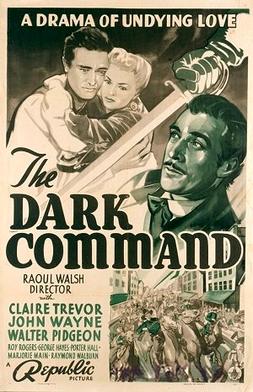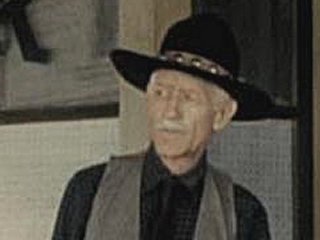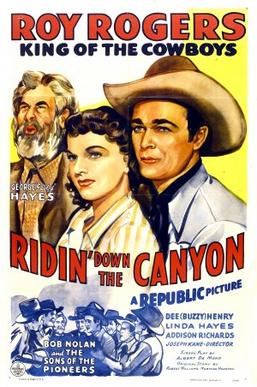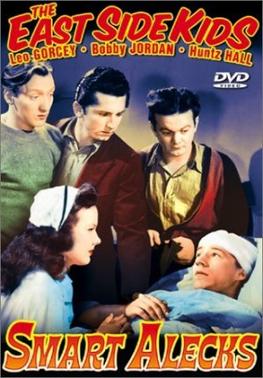Plot
Riding to the small town of Rainbow Valley, John Martin meets George, the mailman for the area, who is looking for water for his car. Martin, surprised to see a car, gives George his canteen of water. Farther down the road, highwaymen have set up an ambush for George. Martin, who is following on horseback, drives off the highwaymen.
Martin takes George to the town doctor. Eleanor, the postmistress, is suspicious of Martin, but George explains how he fought off the gang. The townspeople are tired of being terrorized by the highwaymen. They are circulating a petition to the governor for assistance in completing their road and ridding it of the gang, which is led by Rogers, a wealthy landowner whose goal is to drive out the townspeople and buy their land cheaply.
Martin went to school for engineering, and volunteers to take charge of the road work. With Martin's encouragement, the road workers start defending themselves against gang attacks. A shoot-out occurs, and George uses dynamite to fend off the attackers.
Rogers walks into the Post Office and steals the road petition, substituting another petition to release a gang member, Butch, from jail. The gang also steals all the remaining dynamite.
Two weeks later, Martin and George wonder why they have not heard any response to the petition. At the gang hideout, the pardoned Butch wants to see Martin, who was his cellmate in jail. Martin seems happy to hear that Butch is in town, and meets with him. He agrees to destroy the road in return for a cut of the profits when the townspeople sell out.
The townspeople gather and talk about how Martin has betrayed them. Powell issues a call to arms. George and Eleanor find a letter from the governor. Martin is actually an undercover agent who is trying to bust the gang.
The mob approaches the gang and Martin. A shoot-out begins between the townspeople and the gang. Butch sets off the dynamite, killing Rogers and all of his men. Martin arrests Butch and explains his undercover assignment to the townspeople.
George drives his car up to the hill and remarks on the road's success. In the back seat of the car, Martin and Eleanor are kissing.

George Francis "Gabby" Hayes was an American actor. He began as something of a leading man and a character player, but he was best known for his numerous appearances in B-Western film series as the bewhiskered, cantankerous, but ever-loyal and brave comic sidekick of the cowboy stars Hopalong Cassidy, Roy Rogers and John Wayne.

Randy Rides Alone is a 1934 American Pre-Code Western film starring John Wayne, Yakima Canutt, and George Hayes. The 53-minute black-and-white film was directed by Harry L. Fraser, produced by Paul Malvern for Lone Star Productions, and released by Monogram Pictures.

Blue Steel is a 1934 American pre-Code Monogram Western film directed by Robert N. Bradbury and starring John Wayne. Wayne plays a U.S. Marshal who is trying to capture the Polka Dot Bandit, who has taken off with $4,000. The film also featured Yakima Canutt and George "Gabby" Hayes. It was released as Stolen Goods in the UK, and this version was later released in a colorized version on home video. Since the movie has fallen into the public domain, several versions are in circulation, including a colorized edition with a jarringly re-dubbed soundtrack, including dialogue, music and sound effects.

The Lucky Texan is a 1934 American Lonestar Films B-movie Western film featuring John Wayne, Barbara Sheldon, Gabby Hayes, and the legendary stuntman and actor Yakima Canutt. It was written and directed by Robert N. Bradbury. It also contains a rare appearance by "Gabby" Hayes without a beard and in drag.

'Neath the Arizona Skies is a 1934 Western film directed by Harry L. Fraser, produced by Lone Star Productions, released by Monogram Pictures and starring John Wayne. Wayne's character attempts to locate a little girl's father, so that she may claim a $50,000 Indian oil claim. The film co-stars Sheila Terry and Shirley Jean Rickert. George "Gabby" Hayes played a featured character with a speaking role, but his name was omitted from the cast list in the opening credits.

Dark Command is a 1940 Western film noir starring Claire Trevor, John Wayne and Walter Pidgeon loosely based on Quantrill's Raiders during the American Civil War. Directed by Raoul Walsh from the novel by W. R. Burnett, Dark Command is the only film in which western icons John Wayne and Roy Rogers appear together, and was the only film Wayne and Raoul Walsh made together since Walsh discovered Wayne working as a prop mover, renamed him, and gave him his first leading role in the epic widescreen Western The Big Trail a decade before.

Jasper Joseph Inman Kane was an American film director, film producer, film editor and screenwriter. He is best known for his extensive directorship and focus on Western films.

Tall in the Saddle is a 1944 American Western film directed by Edwin L. Marin and starring John Wayne and Ella Raines. Written by Paul Fix and Michael Hogan, based on the serialized novel of the same name by Gordon Ray Young, the film is about a tough quiet cowboy who arrives at an Arizona town and discovers that the rancher who hired him has been murdered and that the kindhearted young woman who just inherited the ranch is being manipulated by her overbearing aunt and a scheming Judge who are planning to steal her inheritance. As the cowboy investigates the rancher's murder, he meets the fiery horsewoman who owns a neighboring ranch and who challenges him at first, but eventually falls in love with him. With powerful forces opposed to his presence in the town, the cowboy survives attempts on his life as he gets closer to solving the murder with the help of two beautiful women.

Riders of Destiny is a 1933 pre-Code Western musical film starring 26-year-old John Wayne as Singin' Sandy Saunders, the screen's second singing cowboy. It was the first of a series of sixteen Lone Star Westerns made for Monogram Pictures between 1933-1935, by Wayne and director Robert N. Bradbury, and the first pairing of Wayne with George "Gabby" Hayes.
Robert North Bradbury was an American film actor, director, and screenwriter. He directed 125 movies between 1918 and 1941, and is best known for directing early "Poverty Row"-produced Westerns starring John Wayne in the 1930s, and being the father of noted "cowboy actor" and film noir tough guy Bob Steele.

In Old Santa Fe is a 1934 American Western film directed by David Howard, starring Ken Maynard, George "Gabby" Hayes and Evalyn Knapp and featuring the first screen appearance of Gene Autry, singing a bluegrass rendition of "Wyoming Waltz" accompanied by his own acoustic guitar with Smiley Burnette on accordion. Autry and Burnette were uncredited, but the scene served as a screen test for the duo for subsequent singing cowboy films, beginning with The Phantom Empire (1935), in which Autry had his first leading role.

In Old California is a 1942 American Western film directed by William C. McGann starring John Wayne, Binnie Barnes and Albert Dekker. Wayne plays Tom Craig, a Boston pharmacist who relocates to Sacramento during the Gold Rush.

Earl Dwire, born Earl Dean Dwire, was an American character actor who appeared in more than 150 movies between 1921 and his death in 1940.

Ridin' Down the Canyon is a 1942 American Western film directed by Joseph Kane and starring Roy Rogers. Members of the Western Writers of America chose its title song as one of the Top 100 Western songs of all time, ranked 97.

Bells of Rosarita is a 1945 American musical Western film starring Roy Rogers and directed by Frank McDonald.

Song of Arizona is a 1946 American Western film directed by Frank McDonald and starring Roy Rogers, Dale Evans and George "Gabby" Hayes. It was produced and distributed by Republic Pictures.

Smart Alecks is a 1942 American film directed by Wallace Fox and starring the East Side Kids.

Broadway to Cheyenne is a 1932 American pre-Code Western film directed by Harry L. Fraser. The film is also known as From Broadway to Cheyenne. The film successfully combines the Western with the gangster film and vigilante film.
Hopalong Rides Again is a 1937 American Western film directed by Lesley Selander and written by Norman Houston. The film stars William Boyd, George "Gabby" Hayes, Russell Hayden, Nora Lane, Harry Worth, Lois Wilde and Billy King. The film was released on September 3, 1937, by Paramount Pictures.
Tucson Raiders is a 1944 American Western film directed by Spencer Gordon Bennet and starring Wild Bill Elliott in the role of Red Ryder. It was the first of twenty-three Red Ryder feature films that would be produced by Republic Pictures. The picture was shot on the studio’s back lot along with outdoor locations at Iverson Ranch, 1 Iverson Lane, Chatsworth, Los Angeles.

















